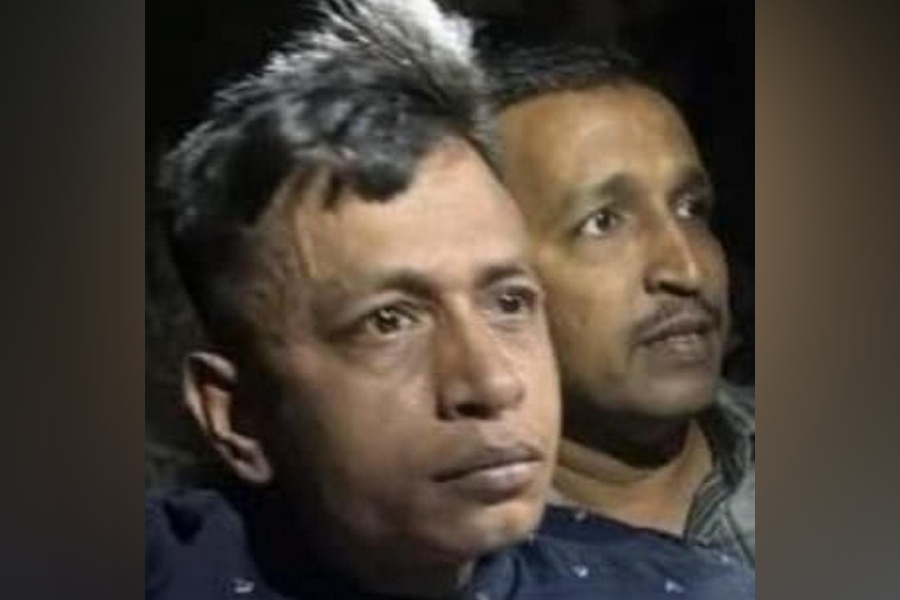A little over a month before the Coromandel Express accident in Odisha, Sidhant Kumar Panda, a passenger, had tweeted a picture that showed a jam-packed sleeper coach with not even standing room. One passenger’s head was sandwiched between the feet of another who had positioned himself atop a berth and stretched his legs to the side seat for want of space.
Panda tagged the railway ministry and the minister on May 5, pleading: “This is the situation in 12841 Coromandel Express (Sleeper Coach). Please take necessary action.”
The passenger received a general reply from the Twitter handle RailwaySeva, asking for the phone number and the PNR.
After the crash on June 2, Panda’s tweet drew intense attention. It also marked the decline and fall of the Coromandel Express, one of the flagship trains of the Indian Railways and a trusted workhorse that was once Bengal’s key bridge with southern India.
Launched in 1977, the train was initially an inseparable part of holidays for almost every child with roots in southern India, ferrying families to and fro and earning a reputation for punctuality, cleanliness and dependable pantry service.
When Bengal’s healthcare system groaned under the strain, Coromandel became a reliable option for countless patients going to the south for treatment, especially to Vellore, although Coromandel did not run till Katpadi, the station where passengers get off to reach the medical facility.
Coromandel again lived up to its reputation when migrant labourers began leaving for the south in their thousands in search of work.
But somewhere along the line, probably accelerated by the mushrooming of private airlines and dramatic changes to the long-distance travel habits of many Indians, Coromandel fell into neglect. Some say that with VIPs switching to planes, trains like Coromandel became nobody’s children.
Others blame the railways’ obsession with new-age trains -- a visible instance of New India undermining what worked well in Old India.
The experience of Panda, the passenger who tweeted the railway ministry last month, was not an exception.
Prosenjit Majhi, who was in the S1 coach of the Coromandel Express on Friday, told The Telegraph over the phone: “The train was filled with people standing inside the coach. There were people sitting on the floor too.”
Majhi is now recuperating at the Midnapore Medical College and Hospital.
K. Nandakumar, a Malayalee residing in Calcutta for four decades, said he would always take the Coromandel Express to Chennai, from where he would catch a train to his native place in Kerala. “I think an overwhelming majority of Malayalees in Calcutta took the Coromandel Express because it was faster than other trains and because of its reputation as a very good train with good services,” said Nandakumar.
National award-winning filmmaker Ashok Vishwanathan recalled going to Chennai with the rushes of his film Shunyo Theke Shuru to have them processed in Chennai labs.
“I went to the lab in Chennai for the processing work and I always took the Coromandel Express. As a child, when I went to Chennai with my parents, they took me on this train,” he said. “It had an excellent pantry, the toilets were clean and the coaches were neat and tidy.”
Since the Coromandel made a stop in Vijaywada, many Hyderabad-bound passengers too took this train, Vishwanathan said.
Nandakumar last took the train about two years ago and was dismayed at the overcrowding and the dirty toilets. “We had an AC three-tier ticket but the journey was not like before. The train was not very clean and the toilets were cleaned after long gaps. That was the last time I took the train,” he said.
A retired railway executive, who spoke on the condition of anonymity, agreed that the quality of the journey on the Coromandel had fallen. He cited several reasons: unavailability of new coaches, lack of personnel to clean the toilets at stations, passenger behaviour, and an increase in stops.
There are 14 stations between Shalimar and MGR Chennai Central and the number of halts have increased over the years, the retired official said.












